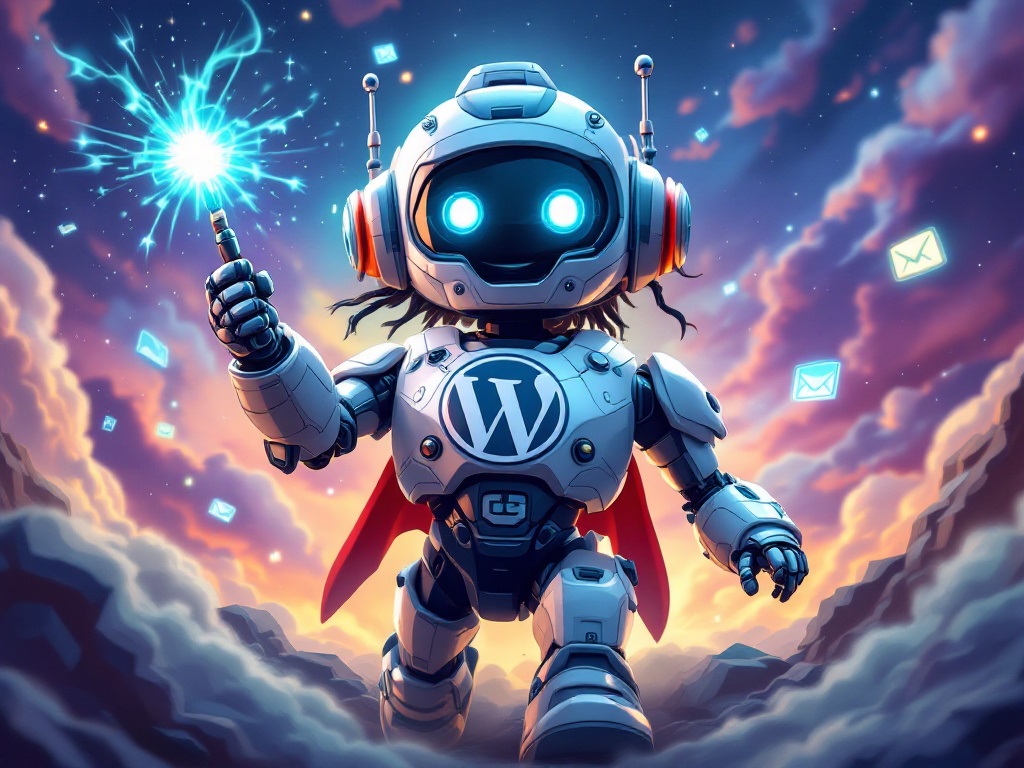Table of Contents
- Introduction
- Summary
- The Evolution of Copywriting and Writing
- Key Trends Shaping the Future of Writing
- The Role of AI in Copywriting
- Jobs Created and Jobs Lost
- Emerging Opportunities for Writers
- The Enduring Power of Human Creativity
- The Importance of Lifelong Learning
- Strategies for Future-Proofing Your Writing Career
- Conclusion
We Stand Together on a Precipice of a Seismic Transformation
The copywriting and writing industries stand on the precipice of a seismic transformation, driven by the relentless advancements in artificial intelligence (AI), the ever-evolving landscape of consumer behaviors, and the unwavering demand for content that not only informs but also captivates, persuades, and deeply resonates with its intended audience.
As a seasoned copywriter, social media influencer, book editor, and business coach, I’ve had the privilege of witnessing firsthand the intricate dance between technology and creativity as they intertwine to shape the narratives that define our modern world.
This article embarks on an in-depth exploration of what lies ahead for writers and copywriters alike, navigating the uncharted territories that span from the burgeoning influence of AI tools to the emergence of novel opportunities and the inherent challenges that accompany them. Whether you’re a veteran wordsmith, wielding decades of experience like a finely crafted pen, or a rising star in the industry, burning with ambition and poised to make your mark, the future promises both disruption and unprecedented innovation.
The key to not only surviving but thriving in this dynamic landscape lies in embracing change with open arms, leveraging the power of new tools with strategic intent, and honing the uniquely human skills that set us apart from the algorithms and machines. It’s about recognizing that AI is not a replacement but an augmentation, a partner in the creative process that can amplify our abilities and free us to focus on the aspects of writing that truly demand human ingenuity.
Join me as we dive deep into the data, dissect the trends, and uncover the actionable strategies that will define the next era of copywriting and writing. This is more than just a forecast; it’s a roadmap for navigating the future with optimism, confidence, and a profound understanding of the forces at play. It’s a call to action for writers to evolve, adapt, and embrace the challenges and opportunities that lie ahead.
The Exciting Future of Copywriting: Artificial Intelligence
The future of copywriting and article writing is not a dystopian vision of machines replacing humans, relegating us to the sidelines of the creative process. Instead, it’s a vibrant tapestry woven from the intricate threads of AI, automation, and the enduring, irreplaceable power of human creativity. While AI tools, such as the sophisticated GPT-4 and the versatile Jasper, are undoubtedly revolutionizing the content creation process, they are not destined to render writers obsolete.
Instead, they are poised to augment our capabilities, freeing us from the shackles of repetitive and mundane tasks, and empowering us to focus on the higher-level aspects of our craft that require critical thinking, emotional intelligence, and strategic vision.
The very nature of jobs within the industry will inevitably evolve, giving rise to new and exciting roles in areas such as AI content editing, ensuring the quality and accuracy of AI-generated text; prompt writing, the art of crafting the perfect instructions for AI; and strategic storytelling, weaving narratives that resonate with audiences on a deep, emotional level.
Traditional copywriting service niches, including SEO copywriting, email copywriting, and brand copywriting, will remain vital, but writers must be prepared to adapt to hybrid roles that seamlessly blend creativity with technical skills, becoming masters of both the art and science of writing.
History serves as a valuable guide, demonstrating that the writing profession has always adapted to technological shifts, from the invention of the printing press, which democratized knowledge and fueled the spread of ideas, to the advent of the internet, which connected the world and created a global marketplace for content.
The future will favor those who embrace lifelong learning, viewing AI as a powerful tool rather than a threat, and cultivating uniquely human skills such as empathy, the ability to understand and share the feelings of others; storytelling, the art of crafting compelling narratives; and strategic thinking, the ability to analyze situations and develop effective solutions.
This article is designed to serve as a compass, guiding you through the complexities of the future of writing and equipping you with the knowledge, insights, and strategies you need to navigate this exciting new world with optimism, confidence, and a clear sense of purpose. It’s about empowering you to take control of your career and shape the future of writing, one word at a time.
The Evolution of Copywriting and Writing: A Historical Perspective
To truly understand the trajectory of the future of copywriting and writing, it’s essential to embark on a journey through the rich tapestry of its past. The history of this multifaceted profession is a testament to human adaptability, ingenuity, and the enduring power of storytelling to connect, persuade, and inspire.
From the groundbreaking invention of the printing press in the 15th century, which democratized access to information and ignited a surge in written content, to the meteoric rise of digital marketing in the 21st century, writers have consistently evolved to meet the ever-changing demands of new mediums and diverse audiences.
The printing press, a revolutionary invention that forever altered the course of human history, not only made books and other written materials more accessible to the masses but also created a burgeoning need for skilled writers, meticulous editors, and visionary publishers. This marked the beginning of a new era for the written word, transforming it from a luxury accessible only to the privileged elite into a powerful tool for communication, education, and persuasion.
The 20th century witnessed the rise of mass media, with advertising taking center stage and shaping consumer culture in profound ways. The iconic “Mad Men” era of the 1960s elevated copywriting services to an art form, with legendary figures like David Ogilvy crafting campaigns that resonated on a deeply emotional level, tapping into the hopes, dreams, and aspirations of the American public. These copywriters understood the power of storytelling and the ability of carefully chosen words to shape perceptions, influence behavior, and build lasting brand loyalty.
Ogilvy, often hailed as the “father of advertising,” emphasized the paramount importance of thorough research, data-driven insights, and a deep understanding of the target audience. His famous quote, “The consumer is not a moron; she is your wife,” reflects his unwavering belief in treating consumers with respect, intelligence, and a genuine understanding of their needs and desires.
His campaigns were renowned for their long-form copy, informative content, and a steadfast focus on building brand image rather than simply making a quick sale. He understood that building trust and credibility was essential for long-term success.
As we transitioned into the digital age, the landscape shifted once again, presenting new challenges and opportunities for writers. SEO copywriting emerged as a critical skill, blending creativity with technical expertise to ensure that content not only resonated with human readers but also ranked highly in search engine results. Writers had to learn how to craft compelling content that also incorporated relevant keywords, optimized metadata, and adhered to the ever-changing algorithms of search engines like Google.
The rise of the internet and social media platforms unleashed a content explosion, transforming the way we consume and interact with information. Suddenly, everyone had a voice, and the competition for attention became fiercer than ever before. This led to the development of new article writing styles, innovative techniques, and sophisticated strategies designed to capture and hold the attention of online readers who were bombarded with information from all directions. Brevity, clarity, and visual appeal became paramount.
Today, AI represents the next frontier, offering tools that can generate content in seconds, analyze vast amounts of data, and personalize messaging with unprecedented precision. However, it’s crucial to recognize that AI is not a replacement for human creativity—it’s a collaborator, a tool that can augment our abilities and free us to focus on the aspects of writing that truly require human ingenuity, such as strategic thinking, emotional intelligence, and ethical considerations.
The future will see writers leveraging AI to handle repetitive tasks, such as keyword research, content formatting, and generating initial drafts, thereby freeing up valuable time for strategic thinking, creative storytelling, and building meaningful connections with audiences on a personal level. It’s about using AI to enhance our creativity, not to replace it.
This evolution mirrors past shifts, where technology enhanced rather than replaced human ingenuity. The printing press didn’t eliminate the need for scribes; it simply transformed their role, creating new opportunities for writers, editors, and publishers. Similarly, AI will not eliminate the need for writers; it will redefine our role and empower us to achieve new levels of creativity, efficiency, and impact.
Trends Shaping the Future of Writing: A Glimpse into Tomorrow
The future of copywriting and writing is being shaped by a confluence of powerful trends, each with the potential to disrupt and transform the industry in profound ways. Understanding these trends is crucial for writers who want to stay ahead of the curve, adapt to the changing landscape, and thrive in the years to come.
AI-Powered Content Creation: Tools like ChatGPT, Jasper, Copy.ai, and other AI-powered platforms are revolutionizing how content is produced, enabling faster turnaround times, greater scalability, and the ability to generate large volumes of content quickly and efficiently. These tools can generate articles, blog posts, ad copy, and even social media updates in a fraction of the time it would take a human writer, allowing writers to focus on higher-level tasks.
Hybrid Roles: The traditional boundaries between writing, marketing, and technology are blurring, leading to the emergence of hybrid roles that require a diverse skill set. Writers will increasingly be expected to combine creativity with technical skills like data analysis, SEO copywriting, and AI prompt writing. This means that writers need to be more versatile, adaptable, and willing to learn new skills than ever before.
Personalization: In an age of information overload, consumers crave content that is relevant, engaging, and tailored to their individual needs and interests. AI enables hyper-personalized content, allowing marketers to deliver the right message to the right person at the right time. However, human writers will still be needed to craft the emotional narratives, compelling stories, and authentic voices that resonate with audiences on a deeper level and build trust and loyalty.
New Niches: As technology continues to evolve at an exponential pace, new niches are emerging within the writing industry, creating exciting opportunities for writers with specialized skills. These include voice search optimization (VSO), which focuses on creating content that is optimized for voice-activated devices like smart speakers; conversational AI scripting, which involves writing scripts for chatbots, virtual assistants, and other AI-powered communication tools; and AI-assisted copywriting, where writers work in tandem with AI to produce high-quality content more efficiently.
Ethical Considerations: The use of AI assisted copywriting raises a number of ethical considerations that writers must be aware of and address proactively. Writers will play a key role in ensuring that AI-generated content is accurate, unbiased, and aligned with brand values. This includes fact-checking, verifying sources, avoiding the use of AI to create misleading or deceptive content, and ensuring that AI-generated content does not infringe on copyright or other intellectual property rights.
Upskilling: In a rapidly changing industry, lifelong learning is not just a recommendation; it’s an absolute necessity for survival and success. Writers must commit to continuously upskilling and mastering new tools, platforms, and techniques. This includes learning how to use AI tools effectively, understanding data analytics, staying informed about emerging trends, and developing soft skills like critical thinking, problem-solving, and communication.
Collaboration: The future of writing will be characterized by collaboration between humans and machines. Writers will use AI as a tool to enhance their creativity and productivity, while also leveraging their uniquely human skills to provide strategic direction, emotional intelligence, and ethical oversight. This collaborative approach will allow writers to focus on the aspects of writing that they do best, while AI handles the more mundane and repetitive tasks.
Focus on Authenticity: In a world saturated with content, authenticity is becoming increasingly important. Consumers are more likely to trust brands that are genuine, transparent, and authentic in their communications. Writers will need to focus on creating content that is true to the brand’s values and that resonates with the audience on a personal level.
Emphasis on Storytelling: Storytelling has always been a powerful tool for communication, and it will become even more important in the future. Writers who can craft compelling stories that capture the imagination, evoke emotions, and inspire action will be in high demand. This includes understanding the principles of narrative structure, character development, and plot construction.
Data Privacy and Security: As content becomes more personalized, it’s important to consider the ethical implications of data privacy and security. Writers will need to be aware of the regulations governing the collection, use, and storage of personal data, and they will need to ensure that their content is compliant with these regulations.
The Role of AI in Copywriting: A Powerful Ally
AI is not a malevolent force lurking in the shadows, waiting to usurp your job and render your skills obsolete. Instead, it’s a tool, a powerful ally that can revolutionize the copywriting services industry and empower writers to achieve new levels of success, efficiency, and creativity.
Tools like GPT-4 and Jasper can generate blog posts, ad copy, and even social media captions in seconds, saving writers valuable time and effort that can be redirected towards more strategic and creative endeavors. This allows writers to focus on the aspects of their work that require critical thinking, emotional intelligence, and strategic vision, such as developing compelling brand narratives, crafting persuasive arguments, and building meaningful relationships with audiences.
However, it’s important to recognize the limitations of AI and to understand that it is not a replacement for human creativity and judgment. While AI can generate text that is grammatically correct and factually accurate, it often lacks the emotional intelligence, cultural nuance, and strategic thinking that human writers bring to the table.
For example, while AI can draft a product description that lists the features and benefits of a product, it takes a human to craft a compelling brand story that resonates with audiences on an emotional level, tapping into their aspirations, values, and desires. A human writer can understand the target audience’s needs, desires, and pain points, and then craft a narrative that speaks directly to them, building trust and fostering a sense of connection.
The future will see writers using AI to handle repetitive tasks, such as keyword research and content formatting, while focusing on higher-level creative and strategic work that requires human ingenuity and emotional intelligence. This collaboration between humans and machines will redefine the writing process, making it faster, more efficient, and more innovative.
Imagine a scenario where a copywriter is tasked with creating a series of ads for a new product launch. Instead of starting from scratch, the copywriter could use an AI tool to generate a range of ad copy options, each tailored to a different target audience, highlighting different features and benefits, and using different tones and styles.
The copywriter could then review these options, select the most promising ones, and refine them to create compelling and persuasive ads that truly resonate with the target audience, leveraging their expertise to add a human touch and ensure that the ads are aligned with the brand’s overall messaging and values.
Jobs Created and Jobs Lost: Navigating the Shifting Sands of Employment
The rise of AI will inevitably lead to job displacement in some areas of copywriting services, particularly in roles focused on repetitive, low-value tasks that can be easily automated. For example, AI can easily generate basic product descriptions, simple social media posts, and routine email newsletters, reducing the need for entry-level writers in these specific niches.
However, this disruption will be offset by the creation of new roles that require uniquely human skills and expertise, as well as a deep understanding of AI and its capabilities. Jobs like AI content editors, prompt engineers, and conversational AI prompt writing will become increasingly important, creating new opportunities for writers who are willing to adapt and learn new skills.
AI Content Editors: These professionals will be responsible for reviewing and refining AI-generated content to ensure that it is accurate, grammatically correct, stylistically consistent, and aligned with brand values. They will also need to be able to identify and correct any biases, inaccuracies, or ethical concerns in the AI-generated content, ensuring that it meets the highest standards of quality and integrity.
Prompt Engineers: These specialists will be responsible for crafting precise, effective, and creative AI prompt writing to guide AI tools in generating high-quality content that meets specific requirements. This requires a deep understanding of AI algorithms, natural language processing, and the specific capabilities of different AI tools, as well as the ability to think strategically and creatively to develop prompts that elicit the desired results.
Conversational AI Scriptwriters: These writers will specialize in AI prompt writing scripts for chatbots, virtual assistants, and other AI-powered communication tools, creating engaging and natural-sounding conversations that enhance the user experience and achieve specific business goals. This requires a unique skill set, including the ability to understand user psychology, design conversational flows, and write dialogue that is both informative and engaging.
Additionally, writers who specialize in strategic storytelling, brand voice development, ethical AI oversight, and data-driven content creation will be in high demand, as these roles require uniquely human skills that AI cannot replicate.
The key to thriving in this new landscape is adaptability. Writers must embrace AI as a tool, upskill in emerging areas, and focus on the uniquely human aspects of writing that machines cannot replicate, such as emotional intelligence, critical thinking, and creative problem-solving.
Emerging Opportunities for Writers: A World of Possibilities
The future of writing is not a bleak landscape of job losses and obsolescence. On the contrary, it is a world of emerging opportunities, where writers can leverage their skills, creativity, and adaptability to thrive in new and exciting ways that were previously unimaginable.
AI Content Editing: As AI-generated content becomes more prevalent, the demand for skilled AI content editors will continue to grow exponentially. These professionals will play a crucial role in ensuring that AI-generated content is accurate, high-quality, ethical, and aligned with brand values, acting as gatekeepers of quality and integrity in the AI-driven content ecosystem.
Prompt Engineering: The ability to craft precise and effective prompts for AI tools is becoming increasingly valuable and sought after. Prompt engineers will be in high demand to help organizations maximize the potential of AI-powered content creation, unlocking new levels of efficiency, creativity, and personalization.
Conversational AI Scriptwriting: As chatbots and virtual assistants become more sophisticated and integrated into our daily lives, the need for skilled conversational AI prompt writers will continue to grow. These writers will be responsible for creating engaging, natural-sounding, and human-like conversations that enhance the user experience, build brand loyalty, and drive business results.
Ethical AI Oversight: Ensuring that AI-generated content adheres to ethical guidelines, legal regulations, and brand values is becoming increasingly important in a world where AI is rapidly transforming the content landscape. Writers with expertise in ethics, content governance, and risk management will be in high demand to oversee the use of AI in content creation, mitigating potential risks and ensuring responsible AI practices.
Strategic Storytelling: In an age of information overload and constant distractions, the ability to craft compelling stories that connect with audiences on an emotional level is more valuable than ever. Writers who can weave narratives that resonate with the human spirit, evoke emotions, and inspire action will be highly sought after, becoming master storytellers who captivate audiences and leave a lasting impact.
Data-Driven Writing: Using analytics to create content that drives measurable results is becoming increasingly important in a performance-driven marketing environment. Writers who can analyze data, identify trends, and create content that is optimized for performance will be in high demand, becoming data-savvy storytellers who leverage insights to maximize impact.
Personalization Experts: As consumers demand more personalized experiences, the need for writers who can craft hyper-personalized content for niche audiences will continue to grow. These writers will need to be able to understand the unique needs, interests, and preferences of their target audiences and create content that speaks directly to them, building strong relationships and fostering brand loyalty.
Hybrid Roles: The lines between writing, marketing, and technology are blurring, leading to the emergence of hybrid roles that require a diverse skill set. Writers who can combine writing with skills like UX design, data analysis, AI integration, and content strategy will be highly valued, becoming versatile and indispensable assets to organizations.
The Enduring Power of Human Creativity: The Heart of the Matter
Despite the remarkable rise of AI and its ability to generate content at scale, human creativity will remain at the very heart of the copywriting and writing industries. Machines can mimic patterns, analyze data, and generate text, but they cannot replicate the depth of human emotion, cultural understanding, and strategic thinking that great writing requires to truly resonate with audiences and achieve meaningful results.
For example, a human writer can craft a brand story that resonates with a specific audience, weaving in cultural references, humor, and emotional triggers that AI cannot replicate, creating a sense of connection and authenticity. A human writer can also adapt their writing style to suit different audiences, platforms, and purposes, demonstrating a level of versatility and adaptability that AI cannot match.
The future will see writers focusing on these uniquely human skills, using AI as a tool to enhance their creativity rather than replace it, leveraging AI to handle repetitive tasks and free up time for more strategic and creative endeavors. By embracing this collaborative approach, writers can elevate their craft, create content that truly stands out, and deliver exceptional value to their clients and audiences.
Consider the example of a writer tasked with creating a marketing campaign for a new line of eco-friendly products. While AI could be used to generate product descriptions and website copy, it would take a human writer to craft a compelling narrative that connects with consumers on an emotional level, highlighting the company’s commitment to sustainability, the benefits of using eco-friendly products, and the positive impact that consumers can have on the environment.
The Importance of Lifelong Learning: A Journey, Not a Destination
In a rapidly evolving industry, lifelong learning is not just an option—it’s an absolute necessity for writers who want to remain relevant, competitive, and successful. The writing landscape is constantly changing, with new technologies, platforms, and trends emerging all the time. Writers must stay ahead of the curve by mastering new tools, platforms, and techniques, continuously expanding their knowledge and skillset.
This includes learning how to use AI tools effectively, understanding data analytics, and staying informed about emerging trends like voice search optimization and conversational AI. Writers should also focus on developing soft skills like empathy, adaptability, strategic thinking, and communication, which will remain invaluable in the age of AI.
By committing to continuous learning, writers can future-proof their careers, expand their opportunities, and remain competitive in a dynamic industry. This is not a one-time event but rather an ongoing journey of growth and development.
There are many ways to engage in lifelong learning. Writers can take online courses, attend industry conferences, read books and articles, participate in online communities, and seek out mentors and coaches who can provide guidance and support. The key is to be proactive, curious, and committed to continuous improvement.
Strategies for Future-Proofing Your Writing Career: A Proactive Approach
The future of writing is uncertain, but there are concrete steps that writers can take to prepare for the changes ahead and position themselves for success in the long term. By adopting a proactive approach, writers can future-proof their careers and thrive in the evolving landscape.
Master AI Tools: Learn how to use AI tools like ChatGPT, Jasper, Copy.ai, and others to enhance your workflow, automate repetitive tasks, and generate content ideas. Experiment with different AI tools and find the ones that are most helpful for your specific needs and writing style.
Focus on Strategy: Develop skills in strategic storytelling, brand voice development, content strategy, and audience analysis. These skills will be essential for creating content that resonates with audiences, achieves business goals, and builds brand loyalty.
Embrace Data: Use analytics to create content that drives measurable results. Learn how to track key metrics, analyze data, and use insights to optimize your content for performance.
Stay Informed: Keep up with industry trends, emerging technologies, and best practices. Read industry publications, attend conferences, participate in online communities, and follow thought leaders on social media to stay informed and inspired.
Network: Build relationships with other writers, editors, marketers, and industry professionals. Networking can help you stay informed about new opportunities, learn new skills, find mentors and collaborators, and build a strong professional network.
Develop a Niche: Specialize in a particular writing niche, such as AI content editing, prompt engineering, conversational AI prompt writing, or data-driven writing. Developing a niche can help you stand out from the competition and become a sought-after expert in your field.
Build a Portfolio: Create a portfolio that showcases your best writing work, including samples of different types of content, such as blog posts, articles, website copywriting, and social media posts. A strong portfolio can help you attract new clients and demonstrate your skills and expertise.
Continuously Learn: Commit to lifelong learning by taking online courses, attending workshops, reading books, and staying up-to-date on industry trends. The writing landscape is constantly changing, so it’s important to continuously learn and adapt to stay ahead of the curve.
Conclusion: Embracing the Future, One Word at a Time
The future of copywriting and writing is undoubtedly bright, but it will require adaptability, creativity, and a willingness to embrace change. AI is not a threat to be feared—it’s a powerful tool that can enhance our capabilities, augment our creativity, and open up new opportunities for writers who are willing to learn, adapt, and innovate.
By focusing on uniquely human skills like empathy, storytelling, strategic thinking, and ethical considerations, writers can thrive in this new era, creating content that is not only informative and engaging but also meaningful, authentic, and impactful. The key is to stay curious, keep learning, and approach the future with optimism, embracing the challenges and opportunities that lie ahead.
As the industry evolves, those who embrace innovation, collaboration, and continuous learning will lead the way, shaping the future of writing for generations to come. Let’s write the future together—one word at a time, one story at a time, one connection at a time. The possibilities are endless, and the future is ours to create. —TylerCarty
About the Author: Meet TylerCarty
Tyler Carty stands out as a veteran SEO copywriter, boasting more than 20 years of industry experience. His proficiency extends across diverse sectors, assisting companies of varying scales to enhance their digital presence and attract organic visitors. Tyler’s methodology blends analytical, data-centric techniques with imaginative narrative crafting, guaranteeing that every content piece not only achieves high search rankings but also strikes a chord with the intended readership.
Interested in a direct conversation with Tyler Carty? Reach out via the contact form below. For immediate assistance, call (727)404-8196 now.
Want a FREE consultation about our copywriting services? Fill out the contact form. For faster service call right now. (727)404-8196







